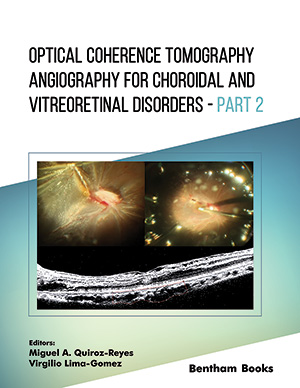摘要
背景:有力的临床前证据表明,Exenatide是一种用于治疗2型糖尿病的胰高血糖素样肽-1(GLP-1)受体激动剂,在阿尔茨海默氏病(AD)中具有神经保护作用和可缓解疾病。 目的:我们进行了一项为期18个月的双盲随机安慰剂对照II期临床试验,以评估Exenatide的安全性和耐受性,并探讨AD早期临床,认知和生物标志物结局的治疗反应。 方法:18名以脑脊液(CSF)生物标志物为基础的高概率AD参与者完成了整个研究,然后被赞助者提前终止。部分结果可用于21。 结果:Exenatide安全且耐受性好,在口服葡萄糖耐量试验中显示出与安慰剂相比,预期的恶心发生率更高,食欲下降,葡萄糖和GLP-1下降。与安慰剂相比,Exenatide治疗在临床和认知指标,MRI皮质厚度和体积,或脑脊液,血浆和血浆神经元细胞外囊泡(EV)中的生物标志物方面均无差异或趋势,只是降低了EV中的Aβ42。 结论:较低的EVAβ42的阳性发现支持新出现的证据,即血浆神经元EV为在AD临床试验中证明生物标志物应答提供了有效的平台。由于提前终止,该研究的动力不足,因此我们无法得出任何肯定的结论。然而,对次要结局的分析表明,没有证据支持Exenatide在临床AD中可以缓解疾病的假说,降低EVAβ42本身并不能改善AD的认知结局。
关键词: GLP-1激动剂,exenatide,记忆,糖尿病,安慰剂,阿尔茨海默病。
[http://dx.doi.org/10.1016/j.jalz.2016.03.001] [PMID: 27570871]
[http://dx.doi.org/10.1016/j.jalz.2017.11.007] [PMID: 29245000]
[http://dx.doi.org/10.15252/emmm.201606210] [PMID: 27025652]
[http://dx.doi.org/10.3389/fnagi.2017.00118] [PMID: 28515688]
[http://dx.doi.org/10.1172/JCI57256] [PMID: 22476196]
[http://dx.doi.org/10.1172/JCI59903] [PMID: 22476197]
[http://dx.doi.org/10.1016/S0002-9149(02)02553-5] [PMID: 12231073]
[http://dx.doi.org/10.1038/nn.2801] [PMID: 21532579]
[http://dx.doi.org/10.1172/JCI79742] [PMID: 25938784]
[http://dx.doi.org/10.1093/brain/awn288] [PMID: 19015157]
[http://dx.doi.org/10.1038/nn0602-849] [PMID: 11992114]
[http://dx.doi.org/10.1073/pnas.0809158106] [PMID: 19188609]
[http://dx.doi.org/10.1345/aph.1Q238] [PMID: 22028424]
[http://dx.doi.org/10.1016/j.nurt.2008.05.003] [PMID: 18625459]
[http://dx.doi.org/10.1016/j.jalz.2013.12.007] [PMID: 24529520]
[http://dx.doi.org/10.1124/pr.108.000604] [PMID: 19074620]
[PMID: 8396143]
[http://dx.doi.org/10.1385/JMN:18:1-2:07] [PMID: 11931352]
[http://dx.doi.org/10.1111/j.1471-4159.2004.02914.x] [PMID: 15686481]
[http://dx.doi.org/10.1097/WNR.0b013e32832fbf14] [PMID: 19617854]
[http://dx.doi.org/10.1124/jpet.300.3.958] [PMID: 11861804]
[http://dx.doi.org/10.2174/1567205054367892] [PMID: 15974903]
[http://dx.doi.org/10.1002/jnr.21483] [PMID: 17803225]
[http://dx.doi.org/10.1002/jnr.22565] [PMID: 21312223]
[http://dx.doi.org/10.1016/j.neurobiolaging.2008.08.023] [PMID: 18930564]
[http://dx.doi.org/10.1016/j.ejphar.2009.12.023] [PMID: 20035739]
[http://dx.doi.org/10.1038/nm919] [PMID: 12925848]
[http://dx.doi.org/10.1016/j.ejphar.2010.10.008] [PMID: 20951130]
[http://dx.doi.org/10.3233/JAD-2010-1314] [PMID: 20308787]
[http://dx.doi.org/10.1016/j.neurobiolaging.2010.02.014] [PMID: 20359773]
[http://dx.doi.org/10.1016/S0140-6736(17)31585-4] [PMID: 28781108]
[http://dx.doi.org/10.1016/j.jalz.2011.03.003] [PMID: 21514248]
[http://dx.doi.org/10.1016/j.jalz.2011.03.005] [PMID: 21514250]
[http://dx.doi.org/10.1212/WNL.0000000000002923] [PMID: 27371494]
[http://dx.doi.org/10.1002/acn3.530] [PMID: 29560372]
[http://dx.doi.org/10.1002/nbm.1026] [PMID: 16541464]
[http://dx.doi.org/10.2337/db08-0958] [PMID: 19276444]
[http://dx.doi.org/10.1096/fj.14-262048] [PMID: 25342129]
[http://dx.doi.org/10.1016/j.jalz.2014.06.008]
[http://dx.doi.org/10.1212/WNL.0000000000001702] [PMID: 26062630]
[http://dx.doi.org/10.3389/fnins.2017.00278] [PMID: 28588440]
[http://dx.doi.org/10.7326/0003-4819-154-2-201101180-00300] [PMID: 21138825]
[http://dx.doi.org/10.3390/ph3082554] [PMID: 27713366]
[http://dx.doi.org/10.1124/dmd.104.001222] [PMID: 15502010]
[http://dx.doi.org/10.3109/07435800.2015.1038353] [PMID: 26186406]
[http://dx.doi.org/10.1037/0894-4105.19.5.629] [PMID: 16187881]
[http://dx.doi.org/10.1155/2012/829743] [PMID: 22577593]
[http://dx.doi.org/10.1080/13854046.2012.694478] [PMID: 22703555]
[http://dx.doi.org/10.1002/hbm.23494] [PMID: 28105773]
[http://dx.doi.org/10.1111/acel.12657] [PMID: 28921841]
[http://dx.doi.org/10.1186/alzrt58] [PMID: 21172069]
[http://dx.doi.org/10.3389/fnagi.2016.00108] [PMID: 27252647]





























